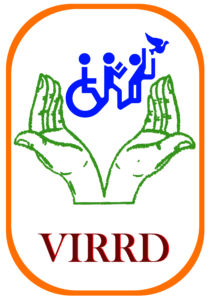FACILITIES @VIRRD
Physiotherapy: Healing through Movement
- About Physiotherapy Department
- About Services
The Physiotherapy Department at VIRRD Hospital is dedicated to providing comprehensive and personalized care to patients in need of physical rehabilitation. Our team of experienced physiotherapists focuses on restoring and enhancing patients’ physical function, mobility, and overall quality of life. Here’s an overview of our Physiotherapy department:
- Expert Physiotherapists: Highly skilled and trained physiotherapists specializing in rehabilitation and movement therapy.
- Wide Range of Specialties: Specializations include musculoskeletal, neurological, pediatric, sports, and geriatric physiotherapy.
- Personalized Treatment Approach: Individualized treatment plans tailored to each patient’s specific condition, goals, and preferences.
- State-of-the-Art Facilities: Modern facilities and advanced equipment for effective rehabilitation.
- Range of Services: Therapeutic exercises, manual therapy, electrotherapy, hydrotherapy, gait training, balance and coordination training, pain management, and more.
- Rehabilitation for Various Conditions: Treatment for musculoskeletal injuries, joint and spine disorders, post-operative rehabilitation, neurological conditions, pediatric developmental delays, sports injuries, and more.
- Patient Education and Home Exercise Programs: Patient education, self-management techniques, and home exercise programs for continued progress and recovery.
- Assessment and Evaluation: Comprehensive assessment of patients’ physical abilities, functional limitations, and rehabilitation needs to develop personalized treatment plans.
- Therapeutic Exercises: Prescribing and supervising exercise programs tailored to individual needs, focusing on improving strength, flexibility, balance, and endurance.
- Manual Therapy Techniques: Hands-on techniques, such as joint mobilization, soft tissue mobilization, and manual stretching, to improve joint range of motion, alleviate pain, and enhance tissue healing.
- Electrotherapy Modalities: Utilizing modalities like electrical stimulation, ultrasound, and laser therapy to manage pain, reduce inflammation, promote tissue healing, and improve muscle function.
- Gait and Balance Training: Assisting patients in improving their walking pattern, balance, and coordination through specific exercises, assistive devices, and functional training.
- Assistive Devices and Mobility Aids: Recommending and training patients in the use of assistive devices, such as crutches, walkers, canes, and wheelchairs, to enhance mobility and independence.
- Pain Management Techniques: Implementing strategies like heat and cold therapy, transcutaneous electrical nerve stimulation (TENS), and relaxation techniques to manage pain and promote comfort.
- Postural Correction and Ergonomic Guidance: Educating patients on proper posture, body mechanics, and ergonomics to prevent injuries, reduce pain, and improve overall musculoskeletal health.
- Patient Education and Counseling: Providing information and guidance on self-care techniques, injury prevention, lifestyle modifications, and managing chronic conditions to empower patients in their recovery and long-term well-being.
